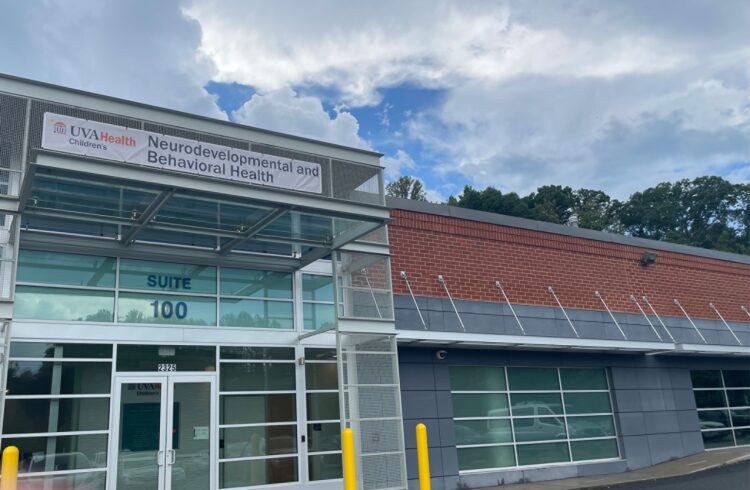
Brian H. Annex, M.D., chief of the Division of Cardiovascular Medicine at the University of Virginia Health System, says he feels like the coach of a championship team. “Going three for three is truly extraordinary,” he says with a mixture of pride and awe in his voice.
In Annex’s case, the wins were achieved by three young cardiologists, each of whom has received a highly competitive K23 grant from the National Institutes of Health. Formally known as Mentored Patient-Oriented Research Career Development Awards, K23 grants provide support for three to five years of mentored study and research.
“It is truly remarkable for one division to have a 100 percent success rate on K23’s sent to the same study section at the NIH. This achievement is a credit to these early career faculty members and their research,” Annex explains.
UVA’s K23 winners are: Kenneth C. Bilchick, MD: Ellen C. Keeley, MD, MS; and, Angela M. Taylor, MD, MS.
Improved resynchronization of failing hearts
Bilchick, an assistant professor of medicine who specializes in cardiology and clinical cardiac electrophysiology, is developing and applying advanced imaging techniques to improve the efficacy of cardiac resynchronization therapy (CRT). A recent medical innovation, CRT significantly improves the heart’s pumping function in some patients. The therapy uses a specialized pacemaker/pacemaker defibrillator with three pacing leads to retime or resynchronize contraction in weak or failing hearts.
As Bilchick observes, “CRT has great potential to markedly improve the symptoms experienced by many patients with heart failure. However, application of CRT has been limited by difficulties in identifying the best patients for this therapy and in determining optimal placement of the resynchronization pacing lead.”
Bilchick’s K23-funded research will assess whether cardiovascular magnetic resonance (CMR) imaging using a novel protocol can accurately predict how well patients will respond to CRT. The pulse sequence, known as cine DENSE (an acronym for displacement encoding with stimulated echoes), has been largely developed at UVA. Bilchick has compiled preliminary data indicating its effectiveness.
In a second facet of his research, Bilchick will use CMR scar imaging and three-dimensional scar maps of a patient’s left ventricle to determine optimal placement of the pacemaker lead. Findings may help more patients receive maximum benefit from CRT.
Patients in Bilchick’s study will undergo clinical assessment, cardiac imaging, cardiopulmonary exercise testing and neurohormonal evaluation before and after their CRT procedure. The study will also help optimize device function and programming after implantation, as well as follow patient outcomes for three years.
New blood vessel growth in patients with severe CAD
Keeley, who is an associate professor of internal medicine and a specialist in interventional cardiology, is investigating a family of molecules that plays a critical role in the promotion or inhibition of new blood vessel growth. Specifically, she wants to determine if the molecules, called chemokines, promote the growth of new, or collateral, blood vessels in the hearts of patients with severe coronary artery disease (CAD).
According to Keeley, about 30 percent of patients with advanced CAD develop collateral blood vessels and tend to have better outcomes than those who do not. Her research will involve evaluating collateral vessel growth in patients while they are undergoing coronary angiography. She will also determine if genetic factors affect circulating levels of chemokines in her patients and if chemokine levels could serve as a biomarker of future cardiovascular events.
Early detection of CAD in diabetic patients
Taylor, an assistant professor of internal medicine, co-director of UVA’s Cardiovascular Diabetes Clinic and a specialist in cardiac catheterization, is using her K23 grant to develop a non-invasive method for early detection of CAD in patients with Type 2 diabetes. Taylor’s research will focus on Type 2 diabetics who are found to have non flow-limiting coronary artery disease during a catheterization procedure. While the procedure is in process, she will use intravascular ultrasound (IVUS) to evaluate the content and character of plaque in the patients’ artery walls.
As a second step, patients will undergo CMR imaging to measure their myocardial microvascular function, which is an indicator of how well the small blood vessels in their heart muscle are performing. If CMR measurements correlate with IVUS findings, Taylor believes it will open the door to using CMR as a noninvasive method to detect CAD at a very early stage. “We’re hoping that this approach will allow us to diagnose and begin treating CAD long before it can be detected by stress testing or cardiac catheterization,” she explains.
Patients participating in Taylor’s research will undergo standard treatment of risk factors in UVA’s Diabetes Cardiovascular Clinic and have repeat studies at one year. “This follow-up step will help us determine which risk factors may be most operative early in the CAD process,” she says.


